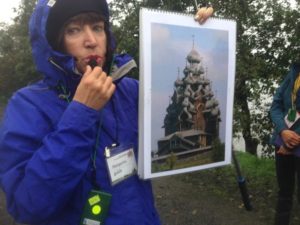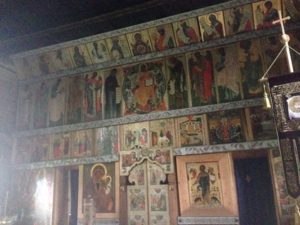I woke up this morning and looked out our window to see this as we arrived in Kizhi pogost (enclosure).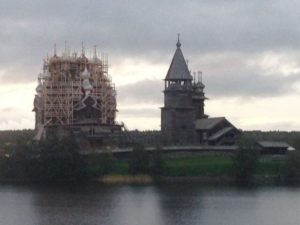
The island of Kizhi, in Lake Omega in Karelia, is 4 miles long and contains the best examples of Russian wooden architecture, the Church of the Transfiguration (summer church, built in 1714), the Church of the Intercession (winter church built in 1764), and an octagonal wooden bell tower built in 1862.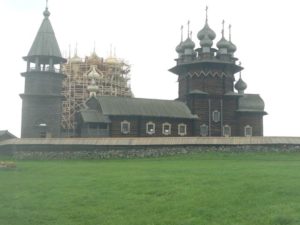

The island was settled by Karelians and Veps (Finish people). We are close to Finland and close to the arctic circle. Russians settled in the 13th century and built the Russian Orthodox churches to impress and convert the pagan natives. The churches served the 3,000 people who lived on the island at the time and the population of the surrounding islands. Today, only 70 people (and 2 thousand vipers) live on the island year round. In summer, a hydrofoil comes every day from the nearest city, but in winter, a helicopter comes only once a week.
Legend has it that the Church of the Transfiguration was built by one man, Master Nestor, who built the nail-less church with only an axe. Apparently, axe cuts are more resistant to water. Both churches are built entirely of aspen. The summer church (undergoing reconstruction) has 22 domes and 33 thousand shingles. It is the largest and most complicated wooden church in the world. Both churches burned down after being struck by lightning in 1693 and the currently existing churches were built on the very site of the former ones.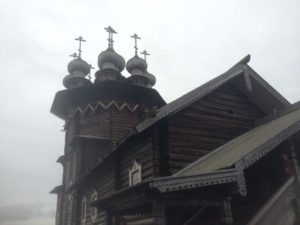
The interior iconographic paintings were done between the 16th and 18th centuries.
The next building we toured was the 1876 farmer’s house (House of Oshevnev) where an extended family of fifteen lived. The exterior trim is ornately carved. The living quarters were one room that could be heated with a large stove. The family ate, cooked, worked, and slept on the floor here.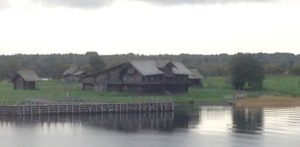
Behind the living space for the family was a much nicer guest space with chairs, oil lamps, and beds.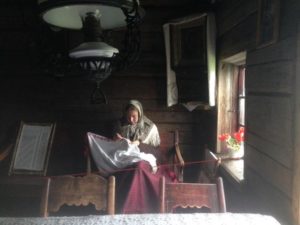
Behind that was a huge workroom where carpentry and even boat building could be done in winter. 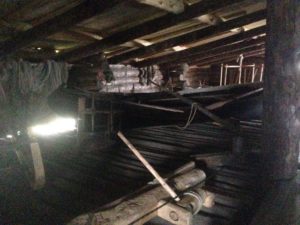
Next, we watched a craftsman creating the aspen shingles used on the cathedrals. He also had watercolors painted on a shingle for sale, and I bought one. Ellie and I also bought small framed oil paintings from a window beside the winter church.
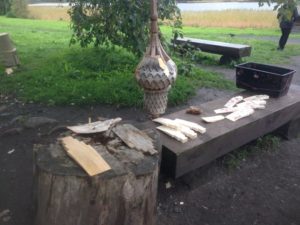 Each house also had a sauna for winter months.
Each house also had a sauna for winter months.
The next small church had a series of bells that were played like a xylophone by a local musician.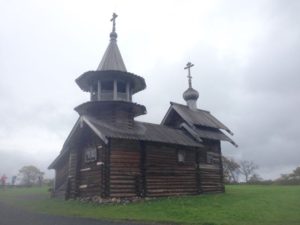
The windmill was used for grinding rye (primary crop on the island) and could be turned to take advantage of winds from different directions.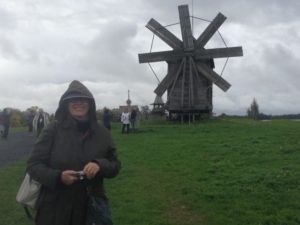
The small Lazarus chapel was a built by St. Lazarus in the middle of the 14th century and later moved here.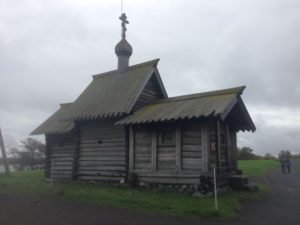
While Ellie sat down to paint the churches, 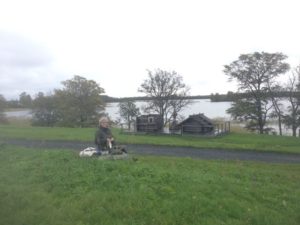 I explored the many other barns, granaries, and several houses line the paths of the area.
I explored the many other barns, granaries, and several houses line the paths of the area. 
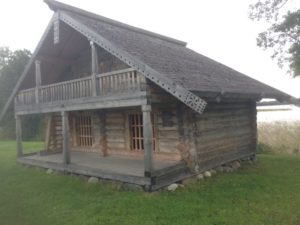
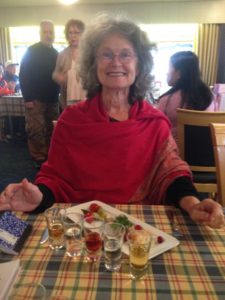
When we got back to the boat, we enjoyed a vodka tasting party.
 We sampled 5 different vodkas with an assortment of Russian appetizers and blinis with caviar while we enjoyed Russian folk music.
We sampled 5 different vodkas with an assortment of Russian appetizers and blinis with caviar while we enjoyed Russian folk music.




